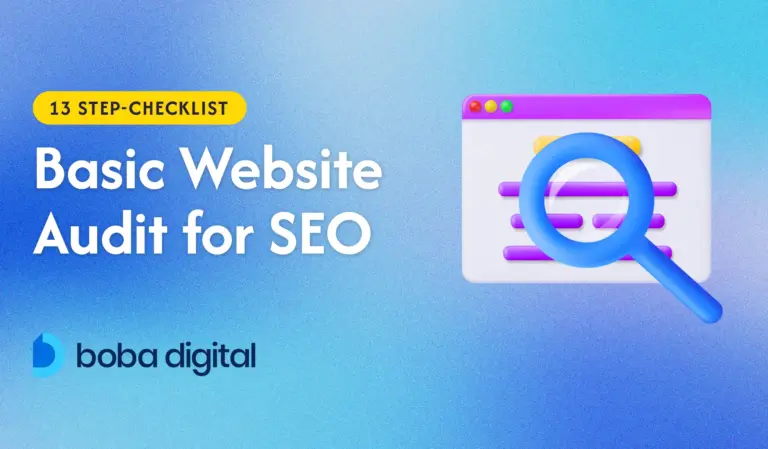How to Calculate SEO ROI: A Detailed Guide
Investing in SEO is essential for businesses looking to increase online visibility and drive sales. But how do you know if your efforts are paying off? Calculating SEO ROI (Return on Investment) provides clarity, showing whether your investment delivers measurable results.
Unlike paid ads, where returns are immediate, SEO operates on a longer timeline, making it harder to attribute traffic growth or revenue gains. This complexity often leaves business owners uncertain about their strategy’s effectiveness.
Enter the SEO ROI Calculator—a tool designed to simplify this process. Offering clear insights into your current performance and future potential eliminates guesswork, helping you make data-driven decisions and maximize the value of your SEO efforts.
Why is Measuring SEO ROI Important?
For business owners investing in SEO, understanding the return on investment (ROI) is critical to making informed decisions. Here’s why measuring SEO ROI should be a priority:
Accountability
Measuring ROI allows you to demonstrate the tangible value of SEO to stakeholders. Whether it’s showing increased traffic, higher conversions, or revenue growth, these metrics validate your investment and build confidence in your strategy.
Optimization
ROI insights help pinpoint what’s working and what isn’t in your campaigns. This enables you to refine your strategy, focus on high-performing keywords, improve website performance, or address gaps in your conversion funnel.
Budget Allocation
SEO often involves significant time and financial resources. Calculating ROI ensures your budget is directed toward efforts that yield measurable results, making your investment more efficient.
Real-World Scenarios Where SEO ROI Matters
- Justifying SEO Investments: Presenting ROI data to secure buy-in from stakeholders or increase your SEO budget.
- Scaling Campaigns: Understanding which strategies generate the best returns to expand efforts with confidence.
- Performance Reviews: Evaluating long-term campaigns to ensure they continue delivering value.
In short, calculating SEO ROI equips you with actionable insights to make smarter, data-driven decisions and unlock the full potential of your SEO investment.
Key Metrics for Calculating SEO ROI
When it comes to understanding the value of your SEO investment, breaking it down into simple, meaningful metrics can make all the difference. These metrics fall into three key categories: traffic, conversion, and financial—each one playing a vital role in painting a clear picture of your ROI.
Traffic Metrics
- Monthly Visitors: This is the number of people coming to your site each month. Think of it as the foundation of your SEO performance—without visitors, nothing else can happen.
- Expected Traffic Growth: This is the increase in traffic you hope to see from your SEO efforts. It’s your best guess at how much more attention your site will attract.
Why It Matters: Growing traffic is a great sign your SEO strategy is working. More visitors mean more opportunities to convert them into paying customers.
Conversion Metrics
- Conversion Rate: This is the percentage of visitors who take a specific action, like buying a product or filling out a contact form. Even a small improvement here can lead to big changes in revenue.
- Average Order Value (AOV): This is the average amount each customer spends when they make a purchase. It’s an easy way to understand how much value each transaction brings.
Why It Matters: It’s not just about getting more visitors—it’s about getting the right visitors who are likely to take action. Conversion metrics help connect the dots between your website traffic and actual sales.
Financial Metrics
- Monthly SEO Investment: This is your budget for SEO, including agency fees, tools, or anything else you’re spending to improve your site’s performance.
- Total Additional Revenue: This measures the extra income you’re generating from SEO efforts—essentially the payoff for all your hard work.
Why It Matters: Financial metrics let you see whether your SEO efforts are paying off. They show how much revenue your SEO generates compared to what you’re spending, giving you a clear picture of profitability.
By keeping an eye on these metrics, you can tell exactly how SEO is helping your business grow. Whether it’s boosting traffic, improving conversions, or driving revenue, these numbers give you the confidence to make smarter, more informed decisions.
How to Calculate SEO ROI
Measuring the return on your SEO investment doesn’t have to feel overwhelming. Whether you prefer to calculate it manually or let a specialized tool do the heavy lifting, understanding the process gives you clarity on how your efforts are driving revenue. Here’s a guide to calculating SEO ROI step-by-step.
Manual Calculation Formula
If you’re a hands-on business owner, here’s how you can manually calculate your SEO ROI:
- Current Monthly Revenue
Use the formula:
Current Monthly Revenue = Monthly Visitors × Conversion Rate × Average Order Value
For example:
- Monthly Visitors = 20,000
- Conversion Rate = 3% (0.03)
- Average Order Value = $50
Calculation: 20,000 × 0.03 × 50 = $30,000
- Expected New Monthly Visitors
Use the formula:
Expected New Monthly Visitors = Monthly Visitors × Expected Traffic Growth (%)
For example:
- Monthly Visitors = 20,000
- Expected Traffic Growth = 10% (0.10)
Calculation: 20,000 × 0.10 = 2,000
- Additional Monthly Revenue
Use the formula:
Additional Monthly Revenue = Expected New Monthly Visitors × Conversion Rate × Average Order Value
For example:
- New Visitors = 2,000
- Conversion Rate = 3% (0.03)
- Average Order Value = $50
Calculation: 2,000 × 0.03 × 50 = $3,000
- Total Revenue Growth
Multiply Additional Monthly Revenue by the SEO campaign timeline (in months).
For example:
- Additional Monthly Revenue = $3,000
- Timeline = 6 months
Calculation: 3,000 × 6 = $18,000
- ROI Formula
Use the formula:
ROI = ((Total Additional Revenue – Total Investment) / Total Investment) × 100
For example:
- Total Additional Revenue = $18,000
- Total Investment = $12,000 ($2,000/month × 6 months)
Calculation: ((18,000 – 12,000) / 12,000) × 100 = 50%
By following these steps, you’ll have a clear understanding of how much your SEO efforts are contributing to your bottom line.
Using the SEO ROI Calculator
For those who prefer a more automated and efficient solution, the SEO ROI Calculator makes the process quick and straightforward. Here’s how it works:
Overview of the Tool
The SEO ROI Calculator simplifies complex calculations by combining user-friendly inputs with powerful formulas. It delivers accurate results, empowering you to focus on optimizing your SEO strategy.
Inputs Required
To use the calculator, provide these data points:
- Current Monthly Visitors: The total users visiting your website.
- Conversion Rate: The percentage of visitors taking desired actions.
- Average Order Value: The typical transaction amount.
- Expected SEO Traffic Growth: The traffic increase you anticipate.
- Monthly SEO Investment: Your SEO budget.
- SEO Timeline: The campaign duration in months.
Understanding the Results
The calculator generates key metrics, including:
- Projected ROI: Your expected profitability from SEO.
- Total Additional Revenue: The extra revenue generated over the campaign.
- Total Investment: The total cost of the campaign.
Example Tutorial
Input Data:
- Current Visitors = 20,000
- Conversion Rate = 3%
- Average Order Value = $50
- Expected Traffic Growth = 10%
- Monthly SEO Investment = $2,000
- Timeline = 6 months
Behind-the-Scenes Calculations:
- Current Revenue:
20,000 × 0.03 × 50 = $30,000
- Expected New Visitors:
20,000 × 0.10 = 2,000
- Additional Monthly Revenue:
2,000 × 0.03 × 50 = $3,000
- Total Additional Revenue:
3,000 × 6 = $18,000
- ROI:
((18,000 – 12,000) / 12,000) × 100 = 50%
Results:
- Total Revenue Growth: $18,000 over 6 months
- Total Investment: $12,000
- ROI: 50%
The SEO ROI Calculator saves you time and ensures accuracy, making it an indispensable tool for evaluating and optimizing your SEO efforts.
Benefits of Using an SEO ROI Calculator
An SEO ROI Calculator is more than just a convenience—it’s a strategic tool that empowers business owners to make smarter decisions about their SEO investments. Here’s how it can benefit your business:
1. Time-Saving: Quick and Accurate Results
Manually calculating SEO ROI involves multiple formulas and a deep dive into metrics, which can be both time-consuming and prone to human error. The SEO ROI Calculator automates this process, delivering precise results in seconds. With minimal input, you can gain a clear understanding of how your SEO efforts are driving revenue, freeing up your time to focus on growing your business.
2. Better Decision-Making: Informed Budget and Strategy Planning
Understanding your ROI equips you to make data-backed decisions. Whether you’re considering increasing your SEO budget, testing a new strategy, or presenting results to stakeholders, the calculator gives you the confidence to plan effectively. It highlights what’s working and where adjustments are needed, ensuring your resources are allocated to areas with the highest potential for growth.
3. Scenario Testing: Predict Outcomes with Confidence
What if you increased your SEO investment? What if your conversion rate improved? The calculator allows you to experiment with different inputs, helping you see how changes in traffic, conversion rate, or average order value would impact your ROI. This feature is invaluable for forecasting and preparing for various scenarios, allowing you to optimize strategies before making commitments.
Real-Life Applications of SEO ROI
Understanding SEO ROI isn’t just a theoretical exercise—it has practical, real-world applications that can guide important business decisions. Here are a couple of scenarios to illustrate how calculating SEO ROI can make a difference:
1. Small Business Assessing the Viability of Hiring an SEO Agency
Imagine a small local bakery considering whether to hire an SEO agency to boost its online presence. The bakery currently receives 5,000 monthly website visitors, with a 2% conversion rate and an average order value of $30. Their monthly revenue from online orders is $3,000.
The SEO agency estimates a 20% increase in traffic with a $1,500 monthly investment over six months. Using the SEO ROI Calculator, the bakery inputs these figures and discovers:
- Expected New Visitors: 5,000 × 0.20 = 1,000
- Additional Revenue: 1,000 × 0.02 × 30 = $600 per month
- Total Additional Revenue: $600 × 6 = $3,600
- Total Investment: $1,500 × 6 = $9,000
- ROI: ((3,600 – 9,000) ÷ 9,000) × 100 = -60%
While the ROI appears negative, the bakery realizes that with improved on-site conversions (e.g., optimizing product pages and checkout flow), the numbers could improve. This insight helps them decide to proceed with a smaller initial campaign while working on conversion improvements.
2. E-Commerce Site Planning to Increase Its SEO Budget
An online clothing store with an average monthly traffic of 50,000 visitors, a 3% conversion rate, and an average order value of $75 is considering doubling its SEO budget from $5,000 to $10,000 monthly. The expected traffic growth from the additional investment is 15%.
By using the SEO ROI Calculator, the store calculates:
- Current Monthly Revenue: 50,000 × 0.03 × 75 = $112,500
- Expected New Visitors: 50,000 × 0.15 = 7,500
- Additional Revenue: 7,500 × 0.03 × 75 = $16,875 per month
- Total Additional Revenue: $16,875 × 6 = $101,250
- Total Investment: $10,000 × 6 = $60,000
- ROI: ((101,250 – 60,000) ÷ 60,000) × 100 = 68.75%
With a projected ROI of nearly 69%, the store confidently decides to increase its SEO budget, knowing it will generate a significant return over six months.
These examples show how businesses can use SEO ROI calculations to make better decisions, whether they’re testing the waters with an SEO agency or scaling their investment for growth. It provides clarity, minimizes risks, and ensures resources are used wisely.
Tips for Maximizing SEO ROI
Once you understand how to calculate SEO ROI, the next step is ensuring your efforts deliver the best possible returns. Here are practical tips to help you maximize your SEO investment:
1. Focus on High-Intent Keywords
Not all keywords are created equal. Targeting high-intent keywords—those that align with your audience’s purchasing or decision-making phase—can drive more qualified traffic to your site. For example:
- An e-commerce business could focus on “buy running shoes online” rather than generic terms like “running shoes.”
- A service provider might prioritize “affordable home cleaning near me” over broader terms like “home cleaning.”
By zeroing in on keywords that signal readiness to act, you increase the likelihood of conversions and revenue growth.
2. Regularly Track and Analyze Performance Metrics
SEO isn’t a set-it-and-forget-it strategy. Regularly monitoring metrics like traffic, bounce rates, conversions, and keyword rankings helps you spot trends, identify gaps, and adapt your strategy.
- Tools like Google Analytics can be used to track visitor behavior.
- Set up dashboards to monitor KPIs such as organic traffic growth, conversion rates, and average order value.
Consistent tracking ensures you stay proactive in optimizing campaigns for better results.
3. Optimize Your Website for Conversions
Attracting traffic is only part of the equation—your website must also convert visitors into customers. Key areas to focus on include:
- Streamlining Navigation: Make it easy for visitors to find what they’re looking for.
- Mobile Responsiveness: Ensure your site works seamlessly on all devices.
- Compelling CTAs: Use clear and persuasive calls to action to encourage conversions.
- Fast Loading Times: A delay of even a few seconds can lead to lost customers.
A well-optimized website ensures you capitalize on increased traffic generated by your SEO efforts.
4. Combine SEO with Other Marketing Channels
SEO performs best when integrated into a broader marketing strategy. Combining SEO with other channels creates synergy that amplifies your results. For instance:
- Content Marketing: Share optimized blog posts on social media to drive traffic.
- Email Marketing: Use SEO insights to tailor email campaigns that resonate with your audience.
- PPC Advertising: Run ads targeting keywords you’re working to rank for organically, ensuring visibility in the short term.
When multiple channels work together, they strengthen your overall marketing efforts, improving both reach and ROI.
Conclusion
Calculating SEO ROI is an essential step for any business investing in SEO. It allows you to measure the success of your efforts, justify your investment, and make informed decisions to optimize your strategies. By understanding the financial impact of your SEO campaigns, you gain the clarity and confidence needed to allocate resources effectively and achieve long-term growth.
Tools like the SEO ROI Calculator make this process simple and accurate, saving time while delivering actionable insights. With just a few inputs, you can project your revenue growth, evaluate your investment, and identify opportunities to maximize returns.
If you’re ready to take control of your SEO performance, try out the SEO ROI Calculator today and unlock the full potential of your investment.







